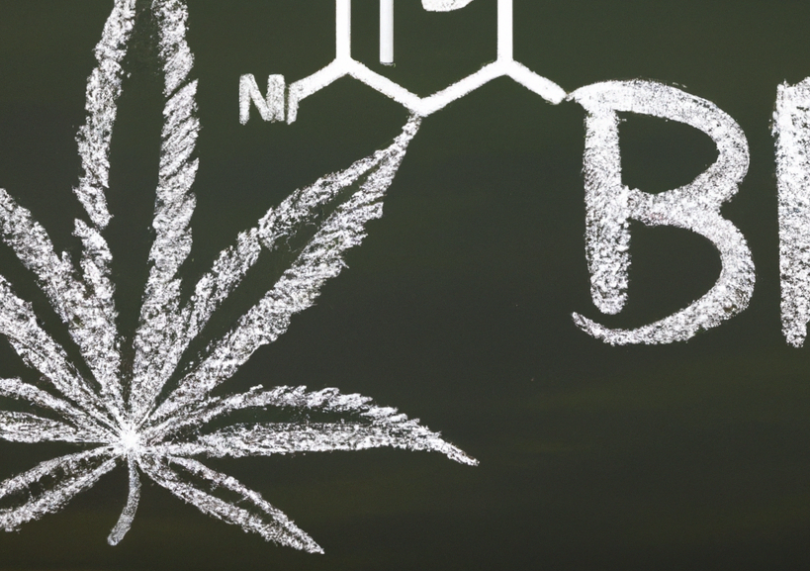Cannabidiol, or CBD, is the second most prevalent cannabinoid and active molecule in the Cannabis plant. It has been shown to have many medicinal properties, including reduction of frequency and intensity of seizures, anti-inflammatory capabilities which can help those with chronic pain, and as an anti-anxiety and stress medication. Biochemically it is similar in many respect to tetrahydrocannabinol (THC), except that it produces none of the psychoactive effects of the aforementioned molecule, making it safe to consume at higher levels and also making its legal status less controversial. CBD is synthesized in vivo from the same precursor molecule as THC, and only diverges at the very last step of synthesis by the action of a separate enzyme, CBDA-Synthase.
What’s really incredible is that, unlike THC, whose legality and safety is fraught with concerns, CBD is legal almost entirely worldwide. With that legality comes a global market ready for capture. The Hemp Business Journal, the market authority on hemp-derived, marijuana-derived and pharmaceutical CBD which provides strategic information and data for the hemp industry, recently published The CBD Report, “the definitive report for market sizes and high-level analysis of business trends in the CBD industry” (1). The article of finding predicted that the consumer CBD market will grow to $2-3 billion in revenue within the next two years—an almost 700% increase from 2016 (2)!
To assist in the efficiency of CBD proliferation and extraction, growers and manufacturers have put significant efforts into genetically engineering strains that have higher CBD contents over the past few years. Their efforts include the Harlequin strain, as well as the strain Charlotte’s Web, what was featured on CNN’s Weed documentary (3). These strains allow manufacturers to get a much higher yield per square foot of grow space, which in turn decreases the price of CBD products to the consumer. In places where Cannabis growth is illegal, manufacturers still have the option of growing industrial quantities of hemp for the extraction, although the extracts they provide are of less high a quality and notoriously impure (4).
Besides being a stand-alone product, adult-use cannabis distributers are seeing a rise of its use for recreational customers, who say it affect their high through the “entourage effect.” The presence of CBD has also been shown to reduce the paranoia and anxiety sometimes associated with Cannabis usage (5). CBD is now being consumed in a variety of ways, including smokable flower, edible products, through vape pens and other cannabis extracts, and through topical administration of creams and gels.
In 2017, the World Health Organization (WHO) Expert Committee on Drug Dependence (ECDD) held a lengthy forum and assessment regarding the potential dangers and benefits of CBD. Among the more interesting findings, the ECDD found that CBD has no potential for misuse and no psychoactive or dependence-inducing effect (worldwide!). Furthermore, the panel listed a veritable slew of potential ailments that preliminary research has shown CBD can treat. Most importantly, CBD has been conclusively demonstrated to act as an epileptic seizure inhibitor, with a compound that’s entirely pure CBD, Epidiolex®, currently going into Phase III clinical trials (5).
“To date, there is no evidence of… any public health related problems associated with the use of pure CBD.”
–39th ECDD, World Health Organization
There is no doubt that CBD has an almost unlimited growth potential. Throughout the world, investors and entrepreneurs are putting chips on the Hemp table and staking out their market share. To quote Ferris Bueller: “CBD moves pretty fast. If you don’t stop and look around once in awhile, you could miss it.”
References
- Anderson, Jill. Beyond CBD: The Frontiers of Hemp Science. June 28, 2017. [March 28, 2018]. http://iwantmycbd.org/cbd-hemp-science.
- The CBD Report & 2017 Mid-Year Updates. Hemp Business Journal. [March 28, 2018]. https://www.hempbizjournal.com/the-cbd-report.
- Borchardt, Debra. The Cannabis Market That Could Grow 700% By 2020. Forbes. December 12, 2016. [March 27, 2018]. https://www.forbes.com/sites/debraborchardt/2016/12/12/the-cannabis-market-that-could-grow-700-by-2020/#457103004be1
- WEED: A CNN Special Report by Dr. Sanjay Gupta. Vimeo. Uploaded September 11, 2014. [March 27, 2018]. https://vimeo.com/105921747.
- Stangel, Matt. Strain Picks: Which CBD Strains Should You Smoke? Willamette Week. July 14, 2017. [March 28, 2018]. http://www.wweek.com/potlander/reviews-cannabis/2017/04/18/strain-picks-which-cbd-strains-should-you-smoke.
- Cannabis oil vs. Hemp oil. Project CBD. [March 27, 2018]. https://www.projectcbd.org/guidance/cannabis-oil-vs-hemp-oil.
- Annex 1: Report on WHO Questionnaire for Review of Psychoactive Substances for the 39th ECDD: Evaluation of Cannabidiol. 39th ECDD (2017) Agenda item 5.2.
Image:
Figure 1. Molecular structure of Cannabidiol (CBD) (1).
Figure 2. More and more strains on the market are CBD-rich and CBD-dominant (5).











